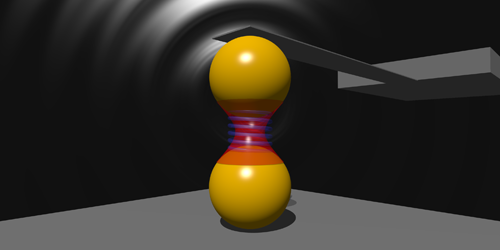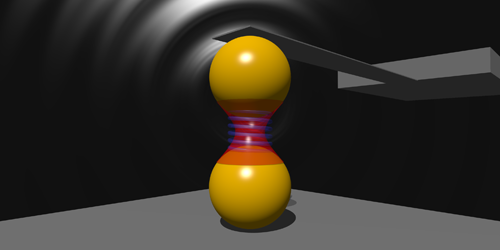Casimir Force Between Two Spheres
Two conductors separated by a submicron distance experience a weak attraction due to quantum fluctuations of the electromagnetic vacuum between the objects. But measuring this so-called Casimir force is challenging, as the objects must be aligned with nanoscale precision. Now researchers have overcome this difficulty by using an atomic force microscope (AFM), measuring the Casimir force between two spheres for the first time. The new approach could allow Casimir-force experiments on objects with any shape, enabling researchers to assess the force’s impact on future nanoscale technologies for accelerometers, microphones, or pressure sensors.
Hendrik Casimir predicted his namesake effect in 1948 based on a theoretical description of two parallel mirrors. But this configuration is hard to study experimentally, as small tilts of the mirrors can dramatically change the Casimir force’s strength. A plane-sphere configuration—used in most experiments—solves this problem because tilts of the plane or lateral movements of the sphere cause only a minor change in the distance between the two conductors. Other configurations, however, remain hard to measure, limiting researchers’ ability to probe and understand Casimir forces.
Jeremy Munday and colleagues at the University of Maryland, College Park, tackle a two-sphere configuration, attaching one sphere to a substrate and the other to the oscillating cantilever of an AFM. Exploiting the AFM’s nanoscale spatial control, the team keeps the spheres centered to within 1% of their radii, which allows the researchers to characterize the Casimir force as a function of distance and the spheres’ radii. Munday and his colleagues suggest that the AFM-based alignment procedure will enable precise measurements of Casimir forces between more complex objects—for example, between a hole and a needle—in air, vacuum, or liquids.
This research was published in Physical Review Letters.
–Matteo Rini
Matteo Rini is the Deputy Editor of Physics.





